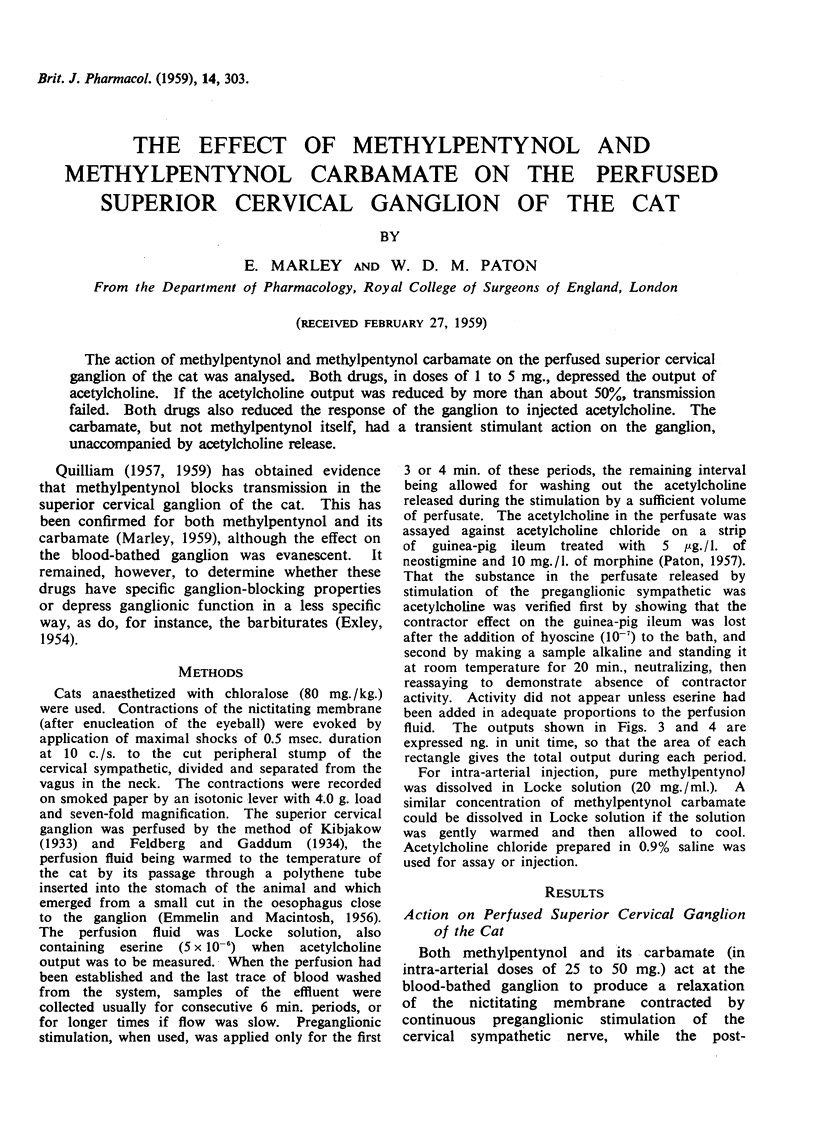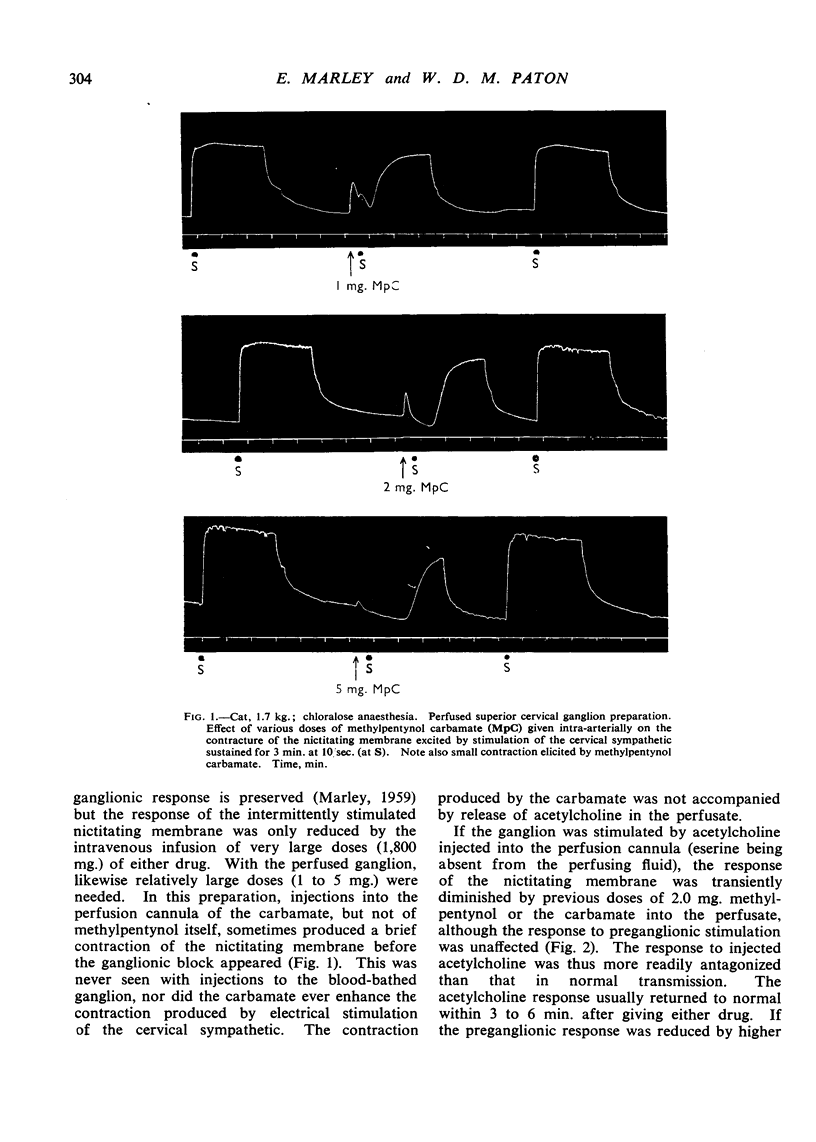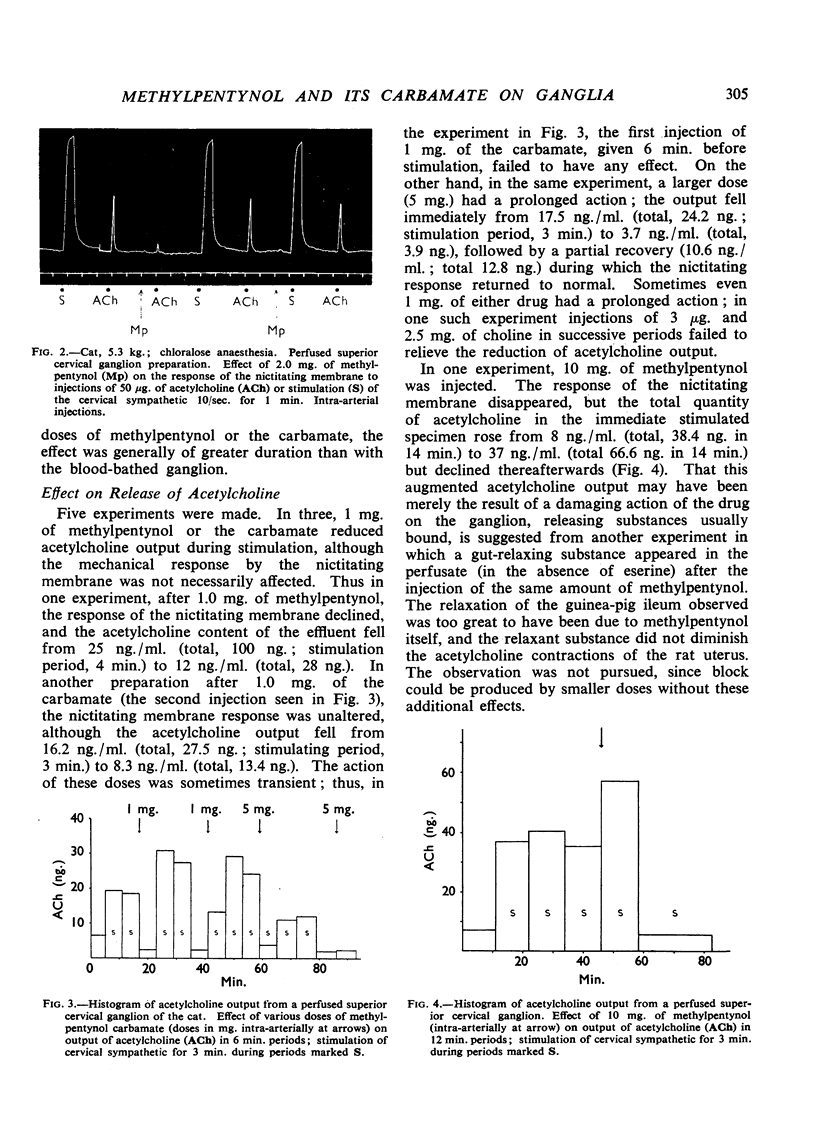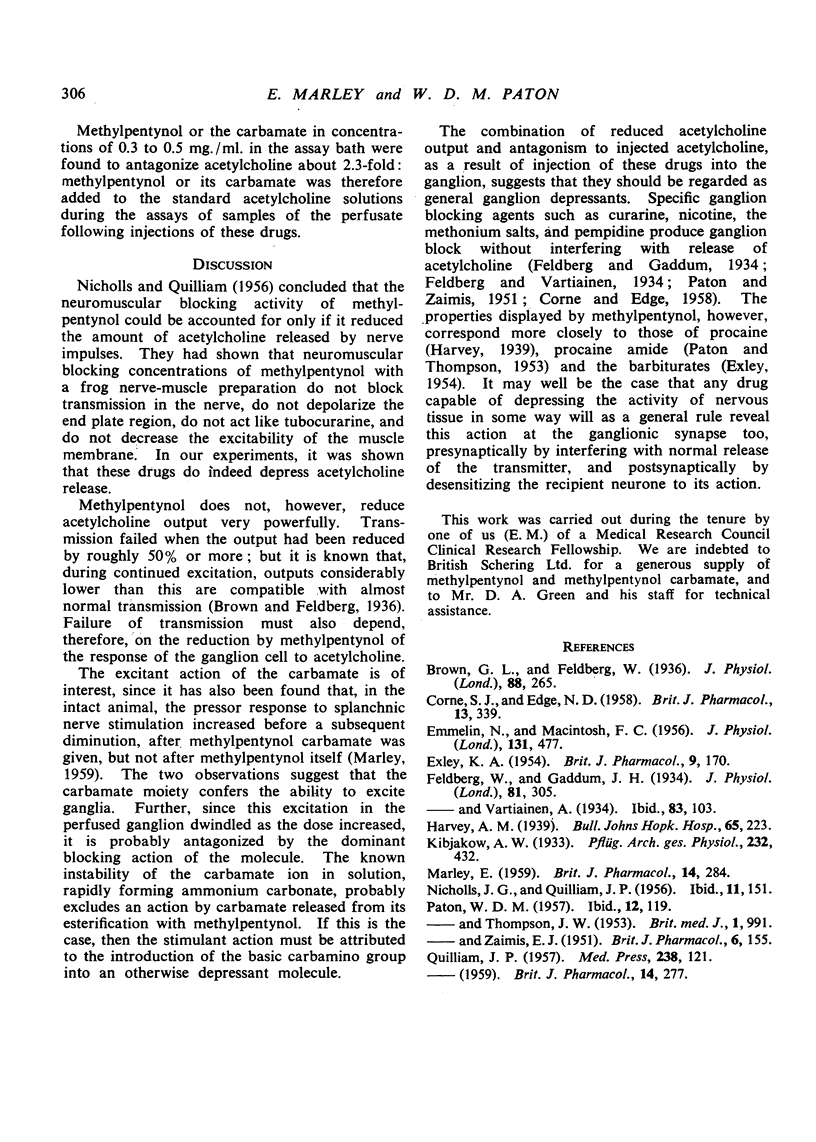Abstract
The action of methylpentynol and methylpentynol carbamate on the perfused superior cervical ganglion of the cat was analysed. Both drugs, in doses of 1 to 5 mg., depressed the output of acetylcholine. If the acetylcholine output was reduced by more than about 50%, transmission failed. Both drugs also reduced the response of the ganglion to injected acetylcholine. The carbamate, but not methylpentynol itself, had a transient stimulant action on the ganglion, unaccompanied by acetylcholine release.
Full text
PDF



Selected References
These references are in PubMed. This may not be the complete list of references from this article.
- Brown G. L., Feldberg W. The acetyloholine metabolism of a sympathetic ganglion. J Physiol. 1936 Dec 11;88(3):265–283. doi: 10.1113/jphysiol.1936.sp003439. [DOI] [PMC free article] [PubMed] [Google Scholar]
- CORNE S. J., EDGE N. D. Pharmacological properties of pempidine (1:2:2:6:6-pentamethylpiperidine), a new ganglion-blocking compound. Br J Pharmacol Chemother. 1958 Sep;13(3):339–349. doi: 10.1111/j.1476-5381.1958.tb00915.x. [DOI] [PMC free article] [PubMed] [Google Scholar]
- EMMELIN N., MACINTOSH F. C. The release of acetylcholine from perfused sympathetic ganglia and skeletal muscles. J Physiol. 1956 Feb 28;131(2):477–496. doi: 10.1113/jphysiol.1956.sp005477. [DOI] [PMC free article] [PubMed] [Google Scholar]
- EXLEY K. A. Depression of autonomic ganglia by barbiturates. Br J Pharmacol Chemother. 1954 Jun;9(2):170–181. doi: 10.1111/j.1476-5381.1954.tb00837.x. [DOI] [PMC free article] [PubMed] [Google Scholar]
- Feldberg W., Gaddum J. H. The chemical transmitter at synapses in a sympathetic ganglion. J Physiol. 1934 Jun 9;81(3):305–319. doi: 10.1113/jphysiol.1934.sp003137. [DOI] [PMC free article] [PubMed] [Google Scholar]
- Feldberg W., Vartiainen A. Further observations on the physiology and pharmacology of a sympathetic ganglion. J Physiol. 1934 Dec 14;83(1):103–128. doi: 10.1113/jphysiol.1934.sp003214. [DOI] [PMC free article] [PubMed] [Google Scholar]
- NICHOLLS J. G., QUILLIAM J. P. The mechanism of action of paraldehyde and methylpentynol on neuromuscular transmission in the frog. Br J Pharmacol Chemother. 1956 Jun;11(2):151–155. doi: 10.1111/j.1476-5381.1956.tb01045.x. [DOI] [PMC free article] [PubMed] [Google Scholar]
- PATON W. D. The action of morphine and related substances on contraction and on acetylcholine output of coaxially stimulated guinea-pig ileum. Br J Pharmacol Chemother. 1957 Mar;12(1):119–127. doi: 10.1111/j.1476-5381.1957.tb01373.x. [DOI] [PMC free article] [PubMed] [Google Scholar]


